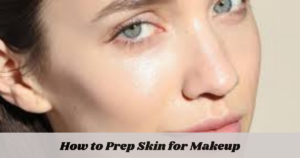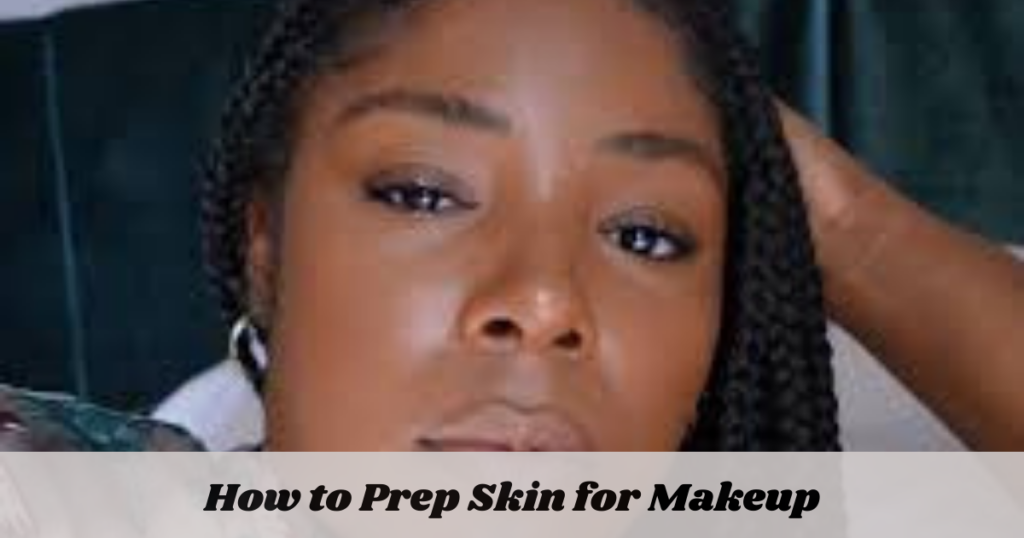Creating a flawless makeup look starts long before you pick up your favorite foundation brush. How to prep skin for makeup is an essential step that sets the stage for smooth application, long-lasting wear, and a radiant finish. This comprehensive guide delves into the key steps and products you need to achieve a prepped and primed canvas for your makeup masterpiece.

The Importance of Proper Skin Prep
Taking the time to prep your skin for makeup offers a multitude of benefits:
- Enhanced Makeup Application: Prepping creates a smooth, even surface, allowing makeup to glide on effortlessly.
- Extended Wear: A prepped canvas helps makeup adhere better, minimizing the risk of smudging or fading throughout the day.
- Improved Finish: Proper prepping promotes a more flawless and even makeup application, highlighting your natural beauty.
- Skin Health Benefits: Certain prepping steps, like cleansing and moisturizing, contribute to overall skin health.
Step-By-Step Guide On To How To Prep Skin For Makeup
Now that you understand the importance of how to prep skin for makeup, let’s dive into the steps involved:
Cleanse:
Starting with a clean canvas is crucial. Makeup applied over dirt, oil, and dead skin cells can appear cakey and uneven. Use a gentle cleanser suitable for your skin type. Wash your face with lukewarm water and pat it dry with a clean, soft towel. Avoid harsh scrubbing or rubbing, which can irritate the skin.
Exfoliate (Optional):
Exfoliation removes dead skin cells that can build up on the surface, contributing to a dull appearance and uneven makeup application. However, exfoliation shouldn’t be done daily. Choose an exfoliating product based on your skin type. Physical scrubs work for some, while chemical exfoliants with AHAs or BHAs are gentler options. Limit exfoliation to 1-2 times per week.
Tone (Optional):
Toners were traditionally used to remove leftover cleanser residue, but many modern cleansers already do this effectively. However, some toners offer additional benefits like hydration or pore minimization. If you choose to use a toner, opt for an alcohol-free formula and apply it with a cotton pad, gently swiping across your face. Avoid harsh rubbing.
Target Concerns (Optional):
If you have specific skin concerns like dryness, redness, or enlarged pores, incorporating targeted treatments can enhance your prep routine. Apply serums or treatments after cleansing and toning, but before moisturizer. Use products formulated for your specific concern.
Moisturize:
Moisturizing is vital for all skin types, even oily skin. It hydrates the skin, creating a plump and supple base for makeup application. Choose a moisturizer that suits your skin type. For oily skin, opt for a lightweight, oil-free formula. For dry skin, select a richer cream. Apply moisturizer after any targeted treatments and allow it to fully absorb before proceeding.
Prime (Optional):
Primer creates a barrier between your skin and makeup, helping it last longer and minimizing the appearance of pores. It can also mattify oily skin or add a subtle radiance to dry skin. Apply a small amount of primer after your moisturizer has absorbed fully. Use a brush, sponge, or your fingertips to blend it evenly across your face, focusing on areas where you tend to get oily or where pores are more visible.
Essential Tools and Products for Skin Prep
Now that you know how to prep skin for makeup, let’s explore the tools and products that can elevate your routine:
- Cleanser: Choose a gentle cleanser formulated for your skin type.
- Exfoliator (Optional): Select a physical or chemical exfoliator based on your skin’s sensitivity.
- Toner (Optional): Opt for an alcohol-free toner with additional benefits like hydration or pore minimization if desired.
- Targeted Treatments (Optional): Serums for dryness, redness, or other specific concerns can be incorporated.
- Moisturizer: Choose a lightweight formula for oily skin and a richer cream for dry skin.
- Primer (Optional): Select a primer that suits your skin type (mattifying for oily, radiance-boosting for dry)

Food and Skin Prep: Does Diet Play a Role?
While a specific “prep food” for makeup application doesn’t exist, maintaining a healthy diet can contribute to overall skin health, which indirectly benefits your makeup application. Here’s what you need to know:
- Hydration is Key: Drinking plenty of water throughout the day keeps your skin plump and hydrated, creating a smoother canvas for makeup. Aim for 8 glasses of water daily, adjusting based on your activity level and climate.
- Fruits and Vegetables: These are packed with antioxidants and essential vitamins that contribute to healthy skin cell turnover and collagen production. Collagen provides structure and elasticity to the skin, leading to a more youthful appearance.
- Healthy Fats: Including healthy fats like those found in avocados, salmon, and nuts in your diet can help nourish your skin and maintain a healthy moisture barrier.
- Limited Processed Foods: Processed foods often contain high amounts of sugar and unhealthy fats, which can contribute to inflammation and breakouts. Opting for whole, unprocessed foods is better for your overall health and may indirectly benefit your skin’s appearance.
Remember: While diet can play a role in skin health, it’s not a guaranteed “fix” for any skin concerns. Genetics and individual factors also influence your skin.
Additional Tips and Considerations
Here are some additional pointers to enhance your skin prep routine:
- Get Enough Sleep: Aim for 7-8 hours of sleep each night. While you sleep, your skin repairs and restores itself, leading to a more refreshed and radiant appearance.
- Manage Stress: Chronic stress can manifest on your skin in the form of breakouts and dullness. Practice relaxation techniques like yoga or meditation to manage stress levels.
- Clean Makeup Brushes Regularly: Dirty makeup brushes can harbor bacteria and contribute to breakouts. Clean your brushes weekly with a gentle cleanser and allow them to air dry completely.
- Test New Products: Before applying a new product all over your face, test it on a small area like your inner arm first. This helps identify any potential allergic reactions.
Conclusion
Taking the time to learn how to prep skin for makeup isn’t just about creating a flawless makeup application; it’s about prioritizing your skin health. By incorporating these steps into your routine, you’ll create a beautiful canvas for makeup while nurturing your skin for a healthy, radiant glow. Remember, consistency is key! The more you prioritize prepping your skin, the more your makeup will enhance your natural beauty.

